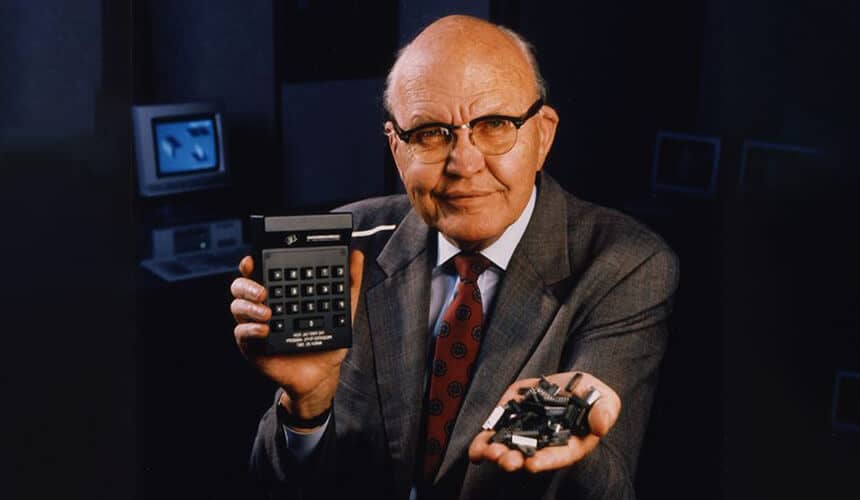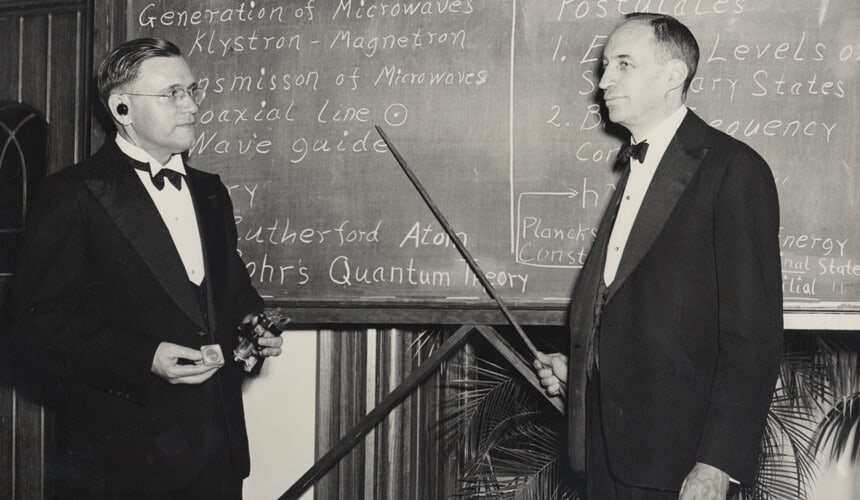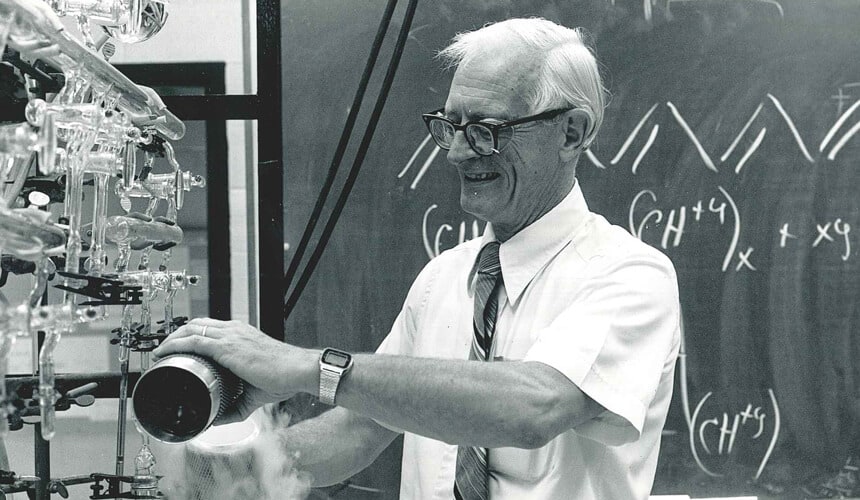John Van Vleck, Alan MacDiarmid, Jack St. Clair Kilby
Ushering in the Digital Revolution
The smartphone technology in your pocket and the electronic gizmos and digital devices in your home or workplace are possible because of the work of four UW–Madison graduates. All four — John Bardeen BS1928, MS1929, John Van Vleck BA1920, Alan MacDiarmid MS1952, PhD1953 and Jack St. Clair Kilby MS1950 — won the Nobel Prize at different times and for separate discoveries that helped unleash the digital revolution.

Portrait of Alan MacDiarmid. (Image courtesy of nobelprize.org.)
Bardeen won the first of two Nobel Prizes in physics in 1956 for his work with colleagues at Bell Labs to invent a semi-conductor we know as the transistor, essential to the design of integrated circuits. He followed up on that achievement by winning the 1972 physics Nobel, as he teamed with a pair of colleagues to develop the first theory of superconductivity.
Van Vleck, known as the founder of the modern theory of magnetism, learned about his 1977 Nobel Prize in physics as he padded around his house in a pajamas and a bathrobe. The award was for his contributions to the development of electronic solid-state circuitry and theories of magnetism and conductivity. From the development of laser beams to creation of electronic gadgets to industrial uses of glass, much of the credit goes to his theories of solid-state physics.
Also contributing to this wellspring of tech discoveries was MacDiarmid, a co-winner of the Nobel Prize in chemistry in 2000, for discoveries in polymers that conduct electricity. The polymers have a range of applications, including in rechargeable batteries, flexible transistor, anti-static materials and stealth applications.
The year 2000 was a good one for UW–Madison graduates in the Nobel chase. Kilby also won a Nobel in physics for his part in the invention of the integrated circuit. Using improvised gear at Texas Instruments in 1958, Kilby built the first electronic circuit in which all of the components were fabricated on a single piece of semiconductor material half the size of a paper clip. The roots of almost every electronic device can be traced to Kilby’s invention.
 2° F
2° F


